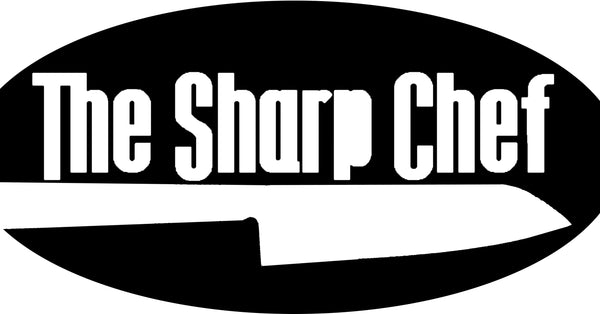Knife Types
There are many different traditional knife types and blade sizes which can be confusing, so here is an explanation of what each type is for to help you pick the right knife for you.
In short, if you are looking for 1 knife, or for your first, then the Gyuto is the strongest all-rounder and is the equivalent to the common western 'chefs knife'. Santoku is also a great all-rounder if you are looking for a shorter knife.
For more information on how to pick the right knife for you, see our 'How to choose the right knife' guide.
Here are the main knife types and what to use them for:
Gyuto – Chef’s Knife:

The Gyuto is a multi-purpose, large bladed knife that you can use for almost everything. Typically these are light strong knives which range from 180mm to 240mm normally (although sometimes longer), with 210mm being the most common and popular size due to it's sweet spot of length for larger tasks but excellent agility. Longer knives tend to be used more for high volume tasks in professional kitchens where 240mm and even 270mm are popular. 180mm is popular for smaller home kitchen tasks too.
The blade profile is great for cutting in a rocking type motion. If you are looking for one knife, this is the most versatile.
Santoku – All-purpose:

(Kei Kobayashi R2 170mm Santoku)
Similar to a Gyuto chef’s knife, the Santoku offers a large light blade with a taller profile and a flatter belly, making the knife excellent for a more ‘up and down’ chopping motion for meat, fish or vegetables. Blades vary from 160mm to 180mm. This is a great knife if you want an all rounder with shorter blade and a good weight to it.
Petty Utility Knife:


(Sakai Takayuki TUS 120mm petty)
This is a smaller blade mainly used for chopping herbs, veg, or perhaps even filleting a fish. A vital knife for when a Gyuto is too big. Blades are normally between 120mm and 150mm
Nakiri – Vegetable:

(Yu Kurosaki Senko SG2 165mm Nakiri)
The Nakiri has a straighter blade perfect for vegetable work with a design to make up and down chopping easier. It's a great knife for tasks such as julienne, brunoise or allumette. Due to its strength and weight it is also an excellent choice for chopping large hard vegetable such as squash or pumpkin.
Paring Knife:

(Sakai Takayuki VG10 33 Layer 80mm Paring)
Similar to a petty utility knife, but typically shorter blades. These are great for peeling and trimming and other off the board tasks. Blades are typically between 60mm and 90mm, with 80mm being very popular.
Slicer - Sujihiki, Yanagiba etc:

(Sakai Takayuki Shirogami Yanagiba)
Typically a long, thin, hard blade designed for slicing, commonly between 240mm and 300mm but available in 210mm to 330mm. This makes an excellent knife for filleting, carving, or slicing meat and vegetables
Sujihiki is double edged blade and can work well as a carving knife and for other longer bladed tasks.
Yanagiba is single bevel, so come in right and left handed varieties. This is primarily used for slicing fish or meat without bones, such as sashimi.
There are also other types of slicer such as; Fuguhiki - Blowfish knife, typically thinner than a standard Yanagiba
Deba – Fish Butchery:

(Sakai Takayuki Shirogami Deba)
Typically a stronger, heavier, thicker single bevel blade originally intended for fish, but ideal for butchery. An excellent knife if you work a lot with fish or meat.
Bread Knives:

Simple really, long serrated blades for cutting bread, but in the Japanese style
